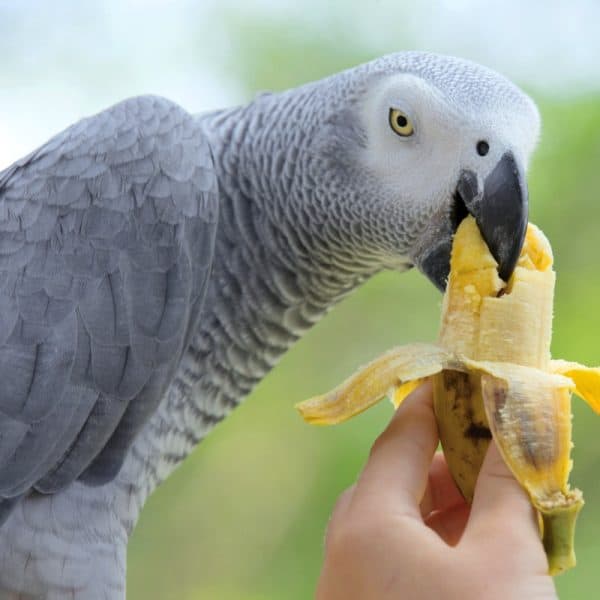Last Updated on by Mitch Rezman
How to use the Roudybush Rice Diet
If your bird is already eating a pelletized or extruded diet, switching it to Roudybush Rice Diet should be simple. Just mix the Rice Diet with the old diet and gradually decrease the old diet.
When the diet is predominantly Rice Diet, watch your bird’s droppings or weigh your bird to make sure it is eating the Rice Diet well. If your bird is not eating it well, the fecal portion of the dropping will turn very dark green or black and be smaller than normal. The feces of birds eating the Rice Diet are pale green. Don’t start counting the time on the Rice Diet until your bird is eating nothing but Rice Diet.
If your bird is not eating a pelletized or extruded diet, the most efficient method for switching your bird is a controlled sudden introduction. This should only be done with otherwise healthy birds at normal body weights. Replace the food in the cage with Rice Diet and change your bird’s cage papers (use paper, not corn cob or walnut shell or other litter).
Watch your bird’s droppings for two full days in small species (under 200 grams) and three full days in larger species (over 200 grams). If your bird’s fecal portion stays very dark green or black and small until the end of that time period, it means your bird is not eating.
Give your bird his old food back and try the switch again in a week. If the fecal portion starts becoming larger and lighter green by the end of the time period, it means the bird has accepted the new diet. Most birds will make the switch the first time but some may take two or three attempts. Many birds will scoop an unfamiliar food out of their feeder or pick it up and crush it in their beaks before dropping it, so do not try to determine whether your bird is eating the diet by seeing the bird chewing it or by its disappearance from the feeder. Watch the droppings.
Once your bird is eating the Rice Diet, do not give it any other food items for up to 10 weeks. Do not give any treats unless it is unseasoned rice or a rice product with nothing but rice on the ingredient list. Even one bite of a food your bird is allergic to can cause a reaction.
Keep a diary of your bird’s preening and feather-picking or mutilation behavior. If you see a decrease in itchy behavior or an improvement in feathering, continue feeding your bird the Rice Diet. This diet is formulated to be a normal maintenance diet for the life of your bird. After you’ve been able to fully evaluate the results of the diet, if you want to give your bird treats you can add one food item back at a time.
For example, if your bird likes corn, you can give it corn (avoid complex processed corn products which may have other ingredients besides corn in them) and then watch your bird to see if the itchy behavior recurs. If it does, you know your bird reacts to corn. If your bird continues to do well, you know your bird tolerates corn and can have that item as a treat. If your bird reacts to the addition of a new food item, wait until the itchiness subsides before trying another new food item. If your allergic bird is housed with another normal bird, they can both eat the rice diet because it is a normal maintenance diet for any bird that is not laying more than 8 eggs each year or feeding chicks.
Storage: Store the diet in a cool, dry place.
Author Profile
Latest entries
 The Traveling BirdJune 26, 2025Can You Name 5 Parrot Species That Are Living Wild in the USA?
The Traveling BirdJune 26, 2025Can You Name 5 Parrot Species That Are Living Wild in the USA? Bird BehaviorJune 26, 2025How is it Parrots Are Problem Solvers Social Animals and Even Use Tools?
Bird BehaviorJune 26, 2025How is it Parrots Are Problem Solvers Social Animals and Even Use Tools? Bird & Parrot AnatomyJune 25, 2025How a Tiny Chemical Modification Makes Parrots Nature’s Living Paintings
Bird & Parrot AnatomyJune 25, 2025How a Tiny Chemical Modification Makes Parrots Nature’s Living Paintings PigeonsJune 20, 2025How Do Parrots Thrive in Cities Outside Their Native Habitats?
PigeonsJune 20, 2025How Do Parrots Thrive in Cities Outside Their Native Habitats?




